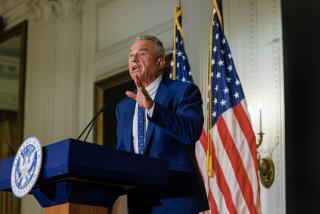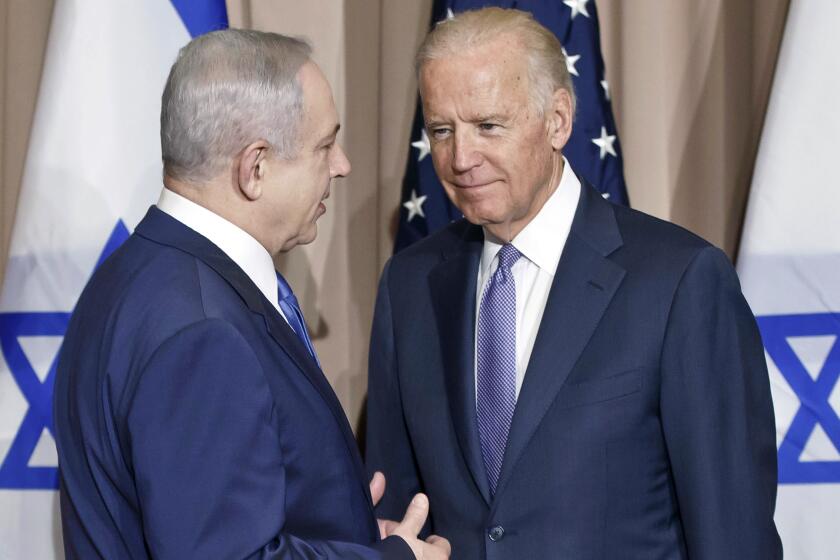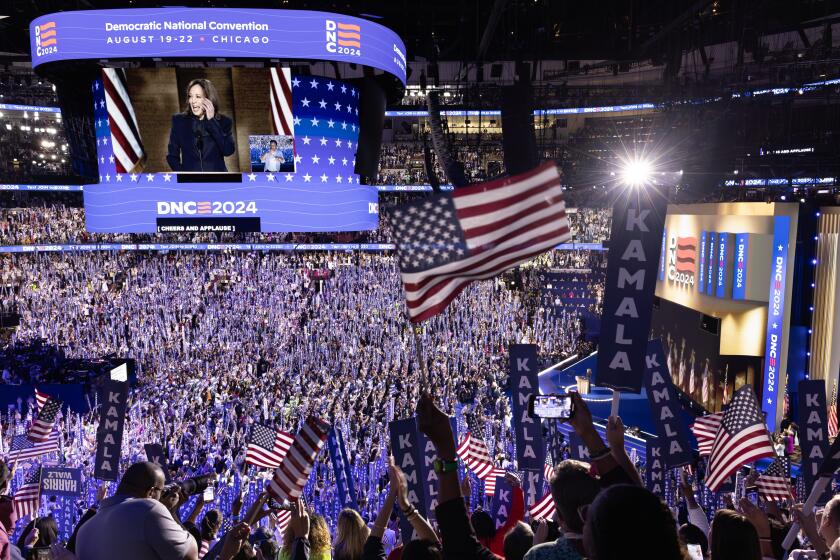High Court to Again Hear Case on Abortion Clinic Protesters
Before leaving for its summer recess, the Supreme Court announced Tuesday that it would take up, for the third time, a long-running dispute between aggressive antiabortion protesters and the National Organization for Women.
At issue is whether the protesters can be sued under the federal antiracketeering law with conspiring to shut down abortion clinics.
For the record:
12:00 a.m. June 30, 2005 For The Record
Los Angeles Times Thursday June 30, 2005 Home Edition Main News Part A Page 2 National Desk 1 inches; 37 words Type of Material: Correction
Abortion lawsuit -- An article in Wednesday’s Section A about an abortion protest case due to come before the Supreme Court misspelled the name of the president of NARAL Pro-Choice America. She is Nancy Keenan, not Keegan.
The justices also said they would take up the case of a Tennessee death row inmate to decide whether new DNA evidence was sufficient reason to require another trial.
As the high court added cases to be heard in the fall, there was increasing reason to believe that Chief Justice William H. Rehnquist planned to be there to decide them.
Rehnquist, 80, defied expectations by not announcing his retirement at the end of the court’s term. He could step down in the days or weeks ahead, but a justice who plans to retire usually first tells colleagues of his plans. Monday marked the last time that justices were to gather as a group until the fall.
Rehnquist, who is being treated for thyroid cancer, struggled to deliver an opinion Monday. He paused often to gasp for air. But the justices have said that in their private meetings, he has been in charge and on top of all of his court work.
The new abortion protest case is an old one for the court.
It began in the mid-1980s, a time of bombings, break-ins and fires at abortion clinics around the nation. NOW’s lawyers maintained that a small group of protesters -- including Joseph Scheidler and the Pro-Life Action League -- were conspiring to shut down the clinics and were using illegal means to do it.
NOW sued the group under the federal antiracketeering law and, after a seven-week trial, a jury in Chicago found the protesters guilty of multiple acts of extortion, threats, conspiracy and violence.
Besides awarding damages, a judge handed down a nationwide order that barred protesters from trespassing on or near abortion clinics.
The protesters, who denied that they had engaged in violence, appealed to the Supreme Court, contending that NOW’s suit violated their free-speech rights under the 1st Amendment. The justices turned away their claim.
The protesters then argued that they could not be sued as racketeers because they were not seeking to extort money from clinics. The Supreme Court rejected that argument in a 1994 ruling.
But two years ago, the high court switched course and ruled that protesters could not be guilty of extortion under federal law because they were not trying to take over abortion clinics. The federal extortion law was intended to deal with mobsters who used threats and violence to take over legitimate businesses.
Although the high court’s ruling was seen as likely to end the case, the U.S. appeals court in Chicago refused to cancel the nationwide order against abortion protesters. Its judges said “acts or threats of physical violence” were enough to keep the suit alive.
This year, lawyers for Scheidler asked the Supreme Court to take up the case for the third time. They said the judges in Chicago had shown a “flagrant disregard” for the high court’s earlier ruling. The court said it would hear the case of Scheidler vs. NOW in the fall.
Jay Sekulow, counsel for the American Center for Law and Justice, said the case offered “a critically important opportunity to remove a dark cloud that has been hanging over the pro-life community for nearly 20 years.”
But Nancy Keegan, president of NARAL Pro-Choice America, said the case offered another reminder about the importance of Supreme Court justices. Will they “support violence, vandalism and intimidation, or will they side with the American women?” she asked.
The DNA case involves Paul G. House, a convicted sex offender who was found guilty of assaulting and killing a neighbor in 1985. As House neared execution, his lawyers came forward with new DNA tests that showed the semen found on the murder victim was from her husband.
Nonetheless, the U.S. appeals court in Cincinnati, in an 8-7 decision, refused to order a new trial and ruled that the circumstantial evidence of House’s guilt was strong.
The justices will reconsider that conclusion in the fall.
After Monday’s ruling limiting prominent displays of the Ten Commandments in public buildings, the justices let stand a series of lower court rulings that had barred the display of the biblical commandments in high schools and courthouses in Ohio and Kentucky.
In one case, an Ohio judge was ordered to remove a poster of the Ten Commandments from his courtroom.
More to Read
Get the L.A. Times Politics newsletter
Deeply reported insights into legislation, politics and policy from Sacramento, Washington and beyond. In your inbox three times per week.
You may occasionally receive promotional content from the Los Angeles Times.







